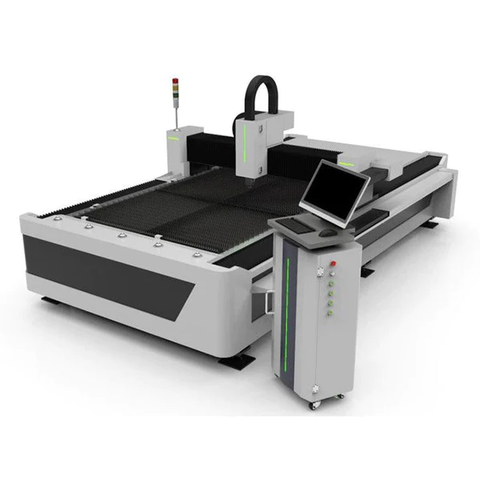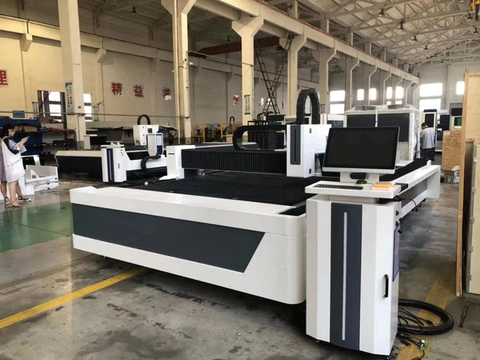Production processes in the fitness equipment industry have undergone major changes in recent years, largely due to the fusion of cutting-edge technologies. One such technology that is revolutionizing the way fitness equipment is designed and manufactured is the laser cutter.
This article delves into the far-reaching impact laser cutting machines have had on the fitness equipment industry, discussing their applications, advantages, challenges, and future prospects.
The Evolution of Fitness Equipment Manufacturing

The fitness equipment industry has undergone a remarkable evolution, fueled by the growing demand for innovative and efficient solutions to cater to health-conscious individuals.
From treadmills and ellipticals to weight machines and exercise bikes, the diversity of fitness equipment has expanded exponentially. To meet the demands of this dynamic market, manufacturers have turned to advanced manufacturing processes that can deliver precision, speed, and customization.
Laser cutting machines have emerged as a transformative force in this evolution, offering a versatile and efficient solution for creating intricate designs, precise cuts, and complex geometries in various materials.
Applications of Laser Cutting Machines
The application of laser cutting machines in the fitness equipment industry is vast and encompasses a range of processes and materials.
Precision Cutting: Laser cutting machines excel in precision cutting, allowing manufacturers to create intricate and detailed components with tight tolerances. This is particularly crucial for fitness equipment components that require precise alignment and fit.
Sheet Metal Fabrication: Many fitness equipment components are made from sheet metal. Laser cutting machines can effortlessly cut through various sheet metal materials, producing clean edges without the need for additional finishing processes.
Customization: Personalization and customization have become key selling points in the fitness equipment industry. Laser cutting machines facilitate the creation of custom designs, patterns, and logos on equipment surfaces, enhancing brand identity and customer appeal.
Prototyping: The ability to quickly prototype new designs and concepts is essential for innovation in the fitness equipment industry. Laser cutting machines enable manufacturers to rapidly create prototypes and iterate designs before moving to mass production.
Material Diversity: Laser cutting machines can handle a wide range of materials, including metals (stainless steel, aluminum), plastics, acrylics, and even composites. This versatility allows manufacturers to choose the best material for each component's functionality and aesthetics.
Hole Drilling and Engraving: Laser cutting machines can also perform hole drilling and engraving tasks, essential for creating bolt holes, hinges, and other functional features on fitness equipment.
Benefits of Laser Cutting in Fitness Equipment Manufacturing
The adoption of laser cutting machines in the fitness equipment industry offers several tangible benefits:
Precision and Accuracy: Laser cutting machines offer unparalleled precision and accuracy, ensuring that each cut is clean, sharp, and in line with design specifications. This level of precision is critical for maintaining consistent quality across equipment components.
Speed and Efficiency: Laser cutting is a rapid process that can significantly reduce production time compared to traditional cutting methods. This efficiency allows manufacturers to meet demand without compromising on quality.
Complex Geometries: Fitness equipment designs often feature complex shapes and geometries. Laser cutting machines can effortlessly handle these intricate designs, enabling the creation of aesthetically pleasing and functional equipment.
Minimal Material Waste: Traditional cutting methods can lead to substantial material wastage. Laser cutting minimizes waste by optimizing the layout of cuts on the material, maximizing material utilization.
Versatility: Laser cutting machines are versatile tools that can work with a variety of materials and thicknesses. This adaptability is invaluable in the fitness equipment industry, where different materials are used for different components.
Reduced Tooling Costs: Unlike conventional cutting methods that may require expensive tooling and dies, laser cutting machines eliminate the need for tool changes, reducing tooling costs and setup time.
Challenges and Considerations

While the benefits of laser cutting in fitness equipment manufacturing are undeniable, there are some challenges and considerations to address:
Initial Investment: Laser cutting machines represent a significant initial investment. Manufacturers must carefully assess their production needs and potential return on investment before making this investment.
Material Compatibility: Not all materials are suitable for laser cutting. Manufacturers need to select materials that are compatible with laser cutting processes to achieve the desired results.
Design Complexity: While laser cutting excels in handling complex designs, extremely intricate designs with fine details may pose challenges. It's important to strike a balance between design intricacy and manufacturability.
Maintenance and Training: Laser cutting machines require regular maintenance and skilled operators. Manufacturers need to invest in training programs to ensure safe and efficient machine operation.
Future Prospects and Innovation
As technology continues to advance, the role of laser cutting machines in the fitness equipment industry is likely to expand further:
Integration with 3D Printing: The integration of laser cutting with 3D printing technologies could lead to the creation of hybrid manufacturing processes, enabling the production of complex, functional, and customizable fitness equipment components.
Automation and Robotics: Automation and robotics can enhance the efficiency of laser cutting processes. Automated material handling and part removal can further streamline production lines.
Material Innovations: As new materials with laser-cutting-friendly properties are developed, manufacturers can explore new possibilities in fitness equipment design and performance.
Software Integration: Advanced software solutions can optimize designs for laser cutting, ensuring efficient material usage and reducing cutting time.
Conclusion
Laser cutters have transformed the fitness equipment industry by offering precision, speed, customization and material versatility.
These machines enable manufacturers to create complex designs, produce components with tight tolerances, and improve overall device quality.
As the fitness equipment industry continues to evolve, laser cutters are likely to play a key role in shaping the design, production and innovation of fitness equipment.






